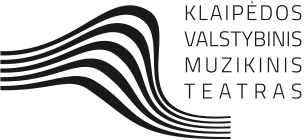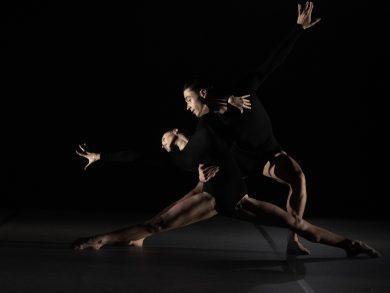The Legend
A ballet in 2 acts, commissioned by the Klaipėda State Music Theatre
This new evening-length ballet by Slovenian choreographer and Artistic Director of Ballet with the KSMT, Gaj Žmavc, set to the original orchestral score written by Antanas Jasenka, draws inspiration from the legacy of Herkus Monte, an iconic Baltic Prussian hero and one of the most revered leaders of the Great Prussian Uprising against the Teutonic Order in the 13th century. But instead of a linear retelling of Herkus’s life story, the choreographer uses his distinctive dance language, abstract symbolism, and minimalistic staging to evoke the emotional landscape of his own fictional world. The historical narrative is thus distilled into symbolic, stylized physical expression and staging, focusing on themes of light, hope, and love as opposition to darkness, despair, and loss.
Although abstract dance patterns that oftentimes feature varisized ensembles of dancers in fast-paced movement can sometimes remind us of some ancient rituals, no particular historical events or personalities are portrayed here. The relation to Herkus Monte’s legacy and his tribal origins in the forests of Natangia is further emphasized through visual imagery that centers around the mighty symbol of an oak tree. In Baltic mythology, the oak tree is closely associated with Perkūnas (the god of thunder) and holds a revered place as a symbol of strength, endurance, and spiritual power. Often considered the ‘sacred tree,’ the oak was central in ancient Baltic rituals and mythology, symbolizing both earthly and divine qualities. It can be also seen as an archetypal symbol of the tree of life connecting to the realm of gods in heaven (branches), the realm of the living (trunk and soil), and the realm of the dead in the underworld (roots) that stores people’s collective memory. Turned upside down and constantly revolving, it may evoke a sense of rootlessness, thus referring to Herkus’s early life, when he was torn out of his native community – abducted and raised as a Christian by the Teutonic knights aiming to obliterate his cultural identity, and the passage of time, which slowly transforms actual events into a legend.
The Lithuanian creative team transformed the stage into a wonderful, highly stylized visual journey, featuring the sets by Sigita Šimkūnaitė, costumes by Sandra Straukaitė, video designs by Martynas Norvaišas, and lighting by Andrius Stasiulis. Through powerful visual symbolism and neoclassical dance language, this ballet celebrates the gift of life and the beauty of movement. It invites the audience to reflect on universal and eternal themes, such as people’s strife for liberty and the fragility of historical memory, which seem to remain of the utmost importance for us today.
AWARDS
The Mask of Gratitude (27/03/2025) to Sigita Šimkūnaitė for the Best Set Design of the Year 2024





















